A group of traditional Muharram mourners, who mark the 7th century deaths of the Imams Ali and Husayn each year during the Islamic month of Muharram, has set up tents in Tehran’s Armenian Square and near a sanctuary of Armenian Christian monasteries. The Armenian monastery of Doulab is one of these – it is nearly 200 years old and dates back to Iran’s Qajar period.
Now a source tells IranWire that Tehran’s city managers may erase the “Armenian” name from the square and may destroy the sanctuary.
Pirooz Hanachi, the mayor of Tehran, who is in the final days of his term, said on June 23, 2021 at an event marking several regeneration projects in District 14, that "About 40 billion tomans have been spent on improving the square and the complex of Armenian monasteries.”
But why is the city spending these 40 billion tomans? And why has the Muharram group taken up a position near the area belonging to the Armenians?
An informed source told IranWire: "Doulab Armenian Cemetery is a 75,000-meter complex that was registered in the list of national monuments in 2000, under item number 2688, as Armenian Cemetery. One of the tombs in this collection, located in the Russian section and known as the Tomb of the Georgian Prince, has been separately registered in the list of national monuments. The history of this dates back to the Qajar period and has six separate sections.
"A large part of this complex is the orthodox section where the patriarchs are buried, and is managed by the Russian Embassy and the Russian Caliphate Church on Mofateh Street," the source continued. "Part of this monastery belongs to the Assyrians and is run by the Chaldean Catholic Assyrian Church. Part of it belongs to the Armenian Catholics and is under the supervision of the Armenian Catholic Caliphate Council on Ghazali Street. A large part of the shrine, where citizens of several different countries are buried, belongs to the Catholics and is under the supervision of the French Embassy, and another part that has a common entrance with the same section, under the supervision of the French Embassy, belongs to people who fought during one of the world wars and is under the supervision of the Polish Embassy."
According to this source, at the beginning of the construction of this 75,000-meter complex during the Qajar dynasty, there were rules for the burial of individuals that have changed over time: "Initially, Orthodox were to be separated from Catholics, but over time, for easier access, a passage was built in this complex which was called the Armenian Garden, and a square was placed in the middle of it, which is called Armenian Square. Until three years ago, a fund was allocated by Tehran City Council to enhance this complex as a tourism development plan, and preserve the gardens as an urban space. The municipality of Tehran has improved the passage; meanwhile, the mourning group we are talking about has also set up its tents in this passage.”
During the July opening ceremony of the passage in the monastery, Pirouz Hanachi said he hoped it would be accepted by the Christian community.
According to an informed source who spoke to IranWire, these are all part of a possible change of the use of the Armenian monastery of Doulab. He says: "Tehran Municipality and the City Council, by attracting funds, began to build a street that was dedicated to the 75,000-meter complex of the monastery. They paved the way and at the same time began talks with the embassies and caliphate councils, which controlled various parts the complex, The projects were rejected by the Russian, French and Polish embassies from the outset."
According to this source, only the council of the Armenian Caliphate of Iran agreed to the proposal of the City Council and welcomed the project, but shortly after the start of the project and by changing the procedure of the city managers, it prevented the work to continue: "Tehran Municipality entered the Armenian sector. It built a toilet and started paving the passageway. Sometime later, however, the Armenian MP wrote to the municipality and decision-makers stating that they were unwilling to continue the reconstruction and renovation project. They also thanked the authorities for the measures taken and stressed that their property in this place should not be damaged."
A review of the news of the last two years about the Armenian shrine of Doulab shows that city managers have continuously tried to remove the Armenian name from this space.
On December 5, 2020, the ISNA news agency announced the possibility of establishing an eco-lodge at the site of the Armenian cemetery. According to the ISNA report, a stonecutter whose shop is located in the Assyrian cemetery said: "They are going to close both sides of the street and after the end of the ongoing project, they will receive entrance fees from the visitors by installing an entrance. According to what I have heard, some trees are going to be cut down, the street is to be paved and the area is to be paved as a pedestrian passageway."
On December 7, 2020, Mehr News Agency, quoting Nouri, Head of Health, Environment and Urban Services of Tehran City Council, announced the plan to build a world peace square in the Armenian shrine and wrote: "With the cooperation of the Ministry of Cultural Heritage and Tourism and the Caliphate Council, Armenians have proposed a plan for world peace so that we can show the Iranian spirit of peace by reviving cemeteries."
On the other hand, in December 2020, a report was published in the ISNA news agency, in which Ahmad Masjedjamei, another member of the Tehran City Council, was quoted as saying: "We went to the neighborhood and discussed our ideas. He made an interesting suggestion and said that we have Behesht [paradise, frequently used for cemetery names] Masoumeh and Behesht Zahr, but we do not have a Behesht for Saint Mary. We should call this paradise the paradise of Maryam."
"I believe that all these events are taking place with the intention of softening public opinion before they remove the Armenian name from this collection," said an informed source who spoke to IranWire. At the time of the opening of the pavement of the passageway and the square of the Armenian monastery, Mr. Hanachi officially invited the embassies and complexes managing the monastery to attend the ceremony. As I said earlier, about 40 citizens of European countries and the US are buried in this shrine. But none of the embassies were present at the opening or even responded to the invitations."
According to this informed source, only members of the Armenian Apostolic Caliphate Council and the Catholic Council were present at the opening. This person says the presence and activity of the Muharram mourning group in the Armenian square aligns with the goals of Tehran Municipality to turn the space into a public urban space such as a park.
”It seems that Tehran’s managers intend to challenge the image of this space as belonging to the Armenians by establishing a mourning group here, which has no background in the neighborhood and has no connection with the Christian or Armenian community in Iran, and to facilitate the transform of this space into a public urban space."
Related coverage:
Dispatch from Tehran: Armenians Reluctantly Leave Their Homeland
Dispatch from Abadan: The Plundering of a Christian Cemetery
visit the accountability section
In this section of Iran Wire, you can contact the officials and launch your campaign for various problems




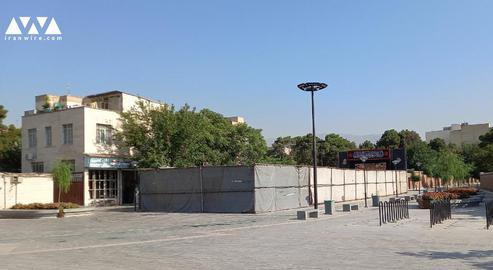
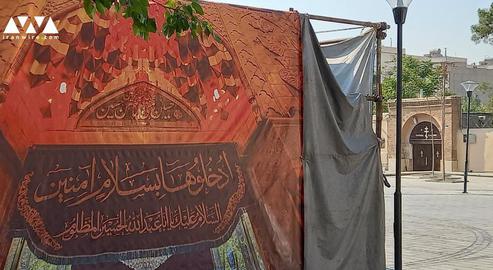
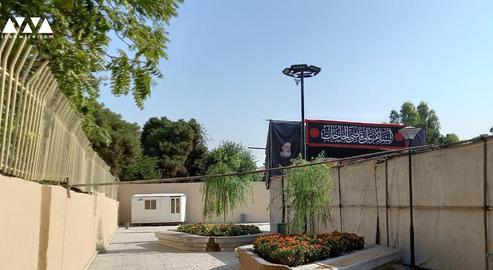
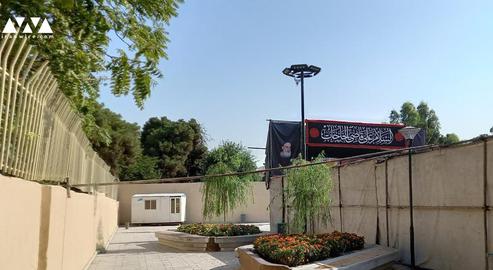



















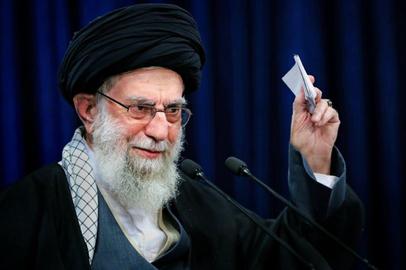
comments